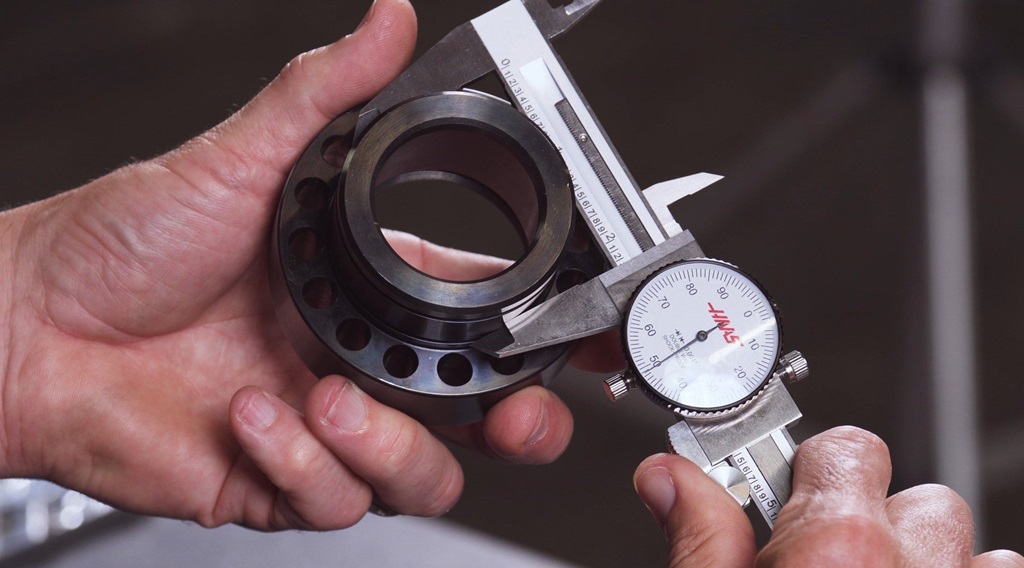The caliper, an unassuming tool often tucked away in toolboxes, is a marvel of engineering that plays a crucial role in numerous fields. From ensuring the precise fit of mechanical components to verifying the dimensions of intricate jewelry, calipers are the unsung heroes of accurate measurement. In this comprehensive article, we’ll delve into the world of calipers, exploring their history, types, applications, and tips for effective use. The content is provided by Best USA Tools.
A Brief History of Calipers
The origins of calipers can be traced back to ancient civilizations, where early versions were crafted from wood or bone. These rudimentary tools allowed for basic measurements, but it wasn’t until the Industrial Revolution that calipers truly flourished. The introduction of vernier calipers in the 19th century revolutionized precision measurement, and subsequent advancements led to the digital calipers we know today.
Types of Calipers
Calipers come in various types, each designed for specific applications and levels of precision.
Let’s take a closer look at the most common types:
- Vernier Calipers: These classic calipers feature a main scale and a sliding vernier scale, enabling measurements in fractions of an inch or millimeter. They are versatile and widely used in workshops and laboratories.
- Dial Calipers: Equipped with a circular dial and a pointer, dial calipers provide a convenient way to read measurements. They are often preferred by professionals who require quick and accurate readings.
- Digital Calipers: These modern calipers boast electronic displays that provide precise digital readings. They offer features like zeroing, data hold, and conversion between units, making them indispensable tools for various industries.
- Oddleg Calipers: These specialized calipers have one leg bent at a 90-degree angle, allowing for measurements in tight spaces or against edges.
- Inside Calipers: Designed to measure internal dimensions, inside calipers have outward-facing jaws that expand to fit within the object being measured.
Applications of Calipers
Calipers find applications in a wide array of fields, including:
- Engineering: Calipers are essential for verifying dimensions of components, ensuring proper fit and function in machines and structures.
- Manufacturing: In production lines, calipers are used for quality control, ensuring that products meet specified tolerances.
- Woodworking: Woodworkers rely on calipers to measure the thickness of wood, the depth of cuts, and the dimensions of joints.
- Jewelry Making: Calipers play a crucial role in measuring gemstones, wire gauges, and the dimensions of intricate designs.
- Science and Research: Laboratories use calipers for various measurements, from the diameter of specimens to the thickness of thin films.
Related: What is the Best Bull Rope for Tree Work?
Tips for Effective Caliper Use

To ensure accurate and consistent measurements, consider these tips:
- Zeroing: Always zero your caliper before each measurement to eliminate any offset errors.
- Proper Technique: Hold the caliper perpendicular to the object being measured, ensuring a firm but gentle grip.
- Multiple Measurements: Take multiple readings and average them to improve accuracy.
- Calibration: Calibrate your caliper periodically to maintain its accuracy.
- Storage: Store your caliper in a clean, dry place to prevent damage to its delicate components.
The Future of Calipers
As technology advances, we can expect further innovations in caliper design and functionality. Wireless connectivity, integration with smartphones and tablets, and even the incorporation of artificial intelligence are just some of the possibilities on the horizon. To stay updated with these advancements and learn how to measure calipers accurately, staying informed about the latest developments is essential. Read more to explore these exciting innovations and their potential impact on precision measurement.
Conclusion
The caliper, though often overlooked, is an indispensable tool for anyone who requires precise measurements. Its versatility, accuracy, and ease of use make it a valuable asset in numerous industries. Whether you’re an engineer, a woodworker, a jewelry maker, or a scientist, a trusty caliper can be your best friend in the pursuit of accurate and reliable measurements.
By understanding the different types of calipers, their applications, and best practices for their use. You can unlock the full potential of this unsung hero of measurement. So, the next time you reach for your caliper, take a moment to appreciate the engineering marvel in your hands – a tool that has been quietly empowering precision for centuries.




